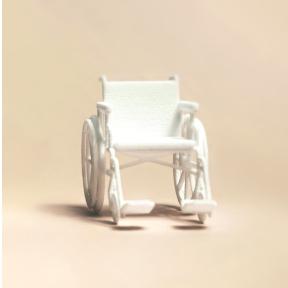Tooth decay is one of the most common dental problems—and if left untreated, it can lead to pain, infection, or even tooth loss.
A cavity filling is a simple and effective way to stop decay and restore the health of your tooth.
But in Germany, the cost of a filling depends on the material used, where the cavity is located, and what kind of health insurance you have.
Prices average €140 but typically range from €30 for a cement filling to over €600 for gold.
Public health insurance (GKV) covers only the standard treatment, so patients often face out-of-pocket costs—especially if they choose a more durable or natural-looking option.
In this guide, you’ll learn:
- What cavity fillings are and when you need one
- The different types of filling materials available
- How much fillings usually cost in Germany
- What public, private, dental insurance and expat insurance covers
- And six practical ways to save money on cavity fillings
By the end, you’ll know exactly what to expect—so you can protect your teeth without overspending.
Let’s get started.
What are cavity fillings?
Cavity fillings are used to repair teeth damaged by tooth decay.
First, a dentist removes the decayed part of the tooth using a drill or special tools. A local anesthetic is usually given to numb the area.
Once the decay is removed, the space, called a cavity, is filled with a strong material that restores the tooth’s shape and function.
The filling is shaped and polished to fit naturally with your bite.
How long a filling lasts depends on the material used, brushing and flossing habits, and diet. Some materials, like gold or ceramic, are very long-lasting. Others, like composite resin or cement, may wear down faster.
Types of dental fillings
Different fillings are available in Germany, each with specific features, benefits, and costs.
Here’s a closer look at the most common types:
1. Composite resin (tooth-colored or plastic filling)
Composite resin is currently the most popular filler choice, especially for visible areas.
- Made of plastic mixed with ceramic, glass, or quartz particles.
- Matches the color of natural teeth—ideal for front or visible teeth.
- Bonds directly to the tooth, preserving more of the healthy structure.
- Applied in a soft form, then hardened with a special light.
- Suitable for both adult and baby teeth.
- Mercury-free and considered safe for long-term health.
- Cost: Around €120 per tooth.
Although not as durable as gold or ceramic, composite fillings offer a good balance of appearance, safety, and affordability.
2. Amalgam (metal filling; being phased out)
Amalgam fillings are silver-colored and very durable. Once widely used for back teeth, they are being phased out due to health concerns.
- Strong, long-lasting, and affordable.
- It contains mercury, which has raised safety concerns.
- As of January 1, 2025, amalgam will generally no longer be used under EU rules.
While still found in older fillings, dentists now have to offer mercury-free alternatives.
3. Ceramic (inlays)
Ceramic fillings are high-quality, tooth-colored, and custom-made for a precise fit.
- Made in a dental lab to match your tooth’s shape.
- Very durable and resistant to wear and staining.
- Offers a natural appearance, especially in back teeth.
- Cost: Typically between €400 and €800 per tooth.
Though more expensive, ceramic inlays are long-lasting and blend well with surrounding teeth.
4. Gold (inlays/onlays)
Gold fillings are strong, long-lasting, and well-suited for larger cavities, especially in the back of the mouth.
- Made from a mix of gold, copper, and other metals.
- Highly durable and rarely causes allergic reactions.
- Custom-made in a lab and fitted to the tooth.
- Visibly noticeable due to color.
- Cost: Around €650 per tooth.
Gold fillings are a premium option—highly effective but more expensive and less discreet.
5. Cement (temporary or base filling)
Cement fillings are typically used as a temporary fix or as a base under other fillings or crowns.
- Quick to apply and very affordable.
- Not tooth-colored and less durable.
- Often used in baby teeth or while waiting for a permanent solution.
- Cost: Between €20 and €40.
These are not intended for long-term use but are helpful in specific cases.
How much do cavity fillings cost in Germany?
The cost of a dental filling in Germany depends on the material used, the size of the cavity, and where it is located in the mouth.
Materials like gold and ceramic are more expensive, partly because they require extra steps.
These fillings are custom-made in a dental lab, which involves taking an impression of the tooth and fitting it later. In the meantime, the dentist uses a temporary cement filling to protect the area.
In contrast, composite (or “plastic”) fillings can be applied in one visit. Once placed, the tooth is immediately functional again.
Here’s an overview of typical costs per tooth without insurance:
| Filling material | Used for | Estimated cost per tooth |
|---|---|---|
| Cement | Temporary fillings and baby teeth | €20 to €40 |
| Amalgam | No longer used since Jan 2025 | €50 to €70 |
| Composite (Plastic) | Front teeth and molars | €60 to €300 |
| Ceramic | Molars | €400 to €800 |
| Gold | Molars | €500 to €1,100 |
Prices can vary depending on the dentist, the complexity of the filling, and the materials used.
Does German health insurance cover cavity fillings?
Yes, but not always entirely.
How much is covered depends on your type of health insurance, the materials used, and your insurance provider.
Let’s break it down.
What does public health insurance (GKV) cover?
If you’re covered by Germany’s statutory health insurance (GKV), you’re entitled to basic dental care, including simple fillings. But coverage is limited.
Here’s what you need to know:
- GKV covers standard plastic (composite) fillings—but only up to the cost of basic care. According to TK, this typically means €40–€50 per tooth.
- Cement fillings are fully covered, but they’re less durable.
- Ceramic or gold fillings are considered premium or cosmetic and are not covered.
- Even with the same material, replacing an intact filling isn’t covered unless medically necessary.
If you choose a more expensive option, like a ceramic inlay, GKV will reimburse only the amount they’d pay for a standard filling. You cover the rest.
Example of out-of-pocket costs with GKV:
| Type of filling material | Cost | Average covered by GKV | You pay |
|---|---|---|---|
| Cement | €30 | €30 | €0 |
| Composite/Plastic (Standard care) | €75 | €45 | €30 |
| Ceramic | €500 | €45 | €455 |
| Gold | €625 | €45 | €580 |
What does supplemental dental insurance cover?
Because public insurance offers limited dental coverage, many purchase dental insurance for better protection.
Coverage varies by provider and plan. Let’s look at Feather’s plans as an example:
- Year 1: €150 worth of coverage
- Year 2: €150 worth of coverage
- After Year 2: No limit on coverage for fillings
Note that unused limits roll over, so if you’re in your second claim-free year, here’s what you might pay:
| Type of filling material | Cost | Average covered by GKV | Covered by Feather | You pay |
|---|---|---|---|---|
| Cement | €30 | €30 | €0 | €0 |
| Composite/Plastic (Standard care) | €75 | €45 | €30 | €0 |
| Ceramic | €500 | €45 | €300 | €155 |
| Gold | 625 | €45 | €300 | €280 |
From year three onward, you’d be fully covered for all of the above with Feather.
Check out our post on Germany’s best dental insurance to find the perfect plan for you.
What does private health insurance cover?
Private health insurance usually offers more comprehensive dental coverage, but the benefits depend on your plan.
Using Feather’s private insurance as an example:
- Fillings are covered 100%, regardless of the material.
- For inlays, you can choose your reimbursement levels (70%, 80%, or 90%) depending on your plan: Standard, Plus, or Premium.
What does expat (incoming) insurance cover?
Expat insurance is one of Germany’s most affordable health insurance, so dental coverage tends to be limited—though this varies by plan and provider.
Using Feather’s insurance as an example:
- Basic short-term plan: Up to €500 for pain-relieving treatments, including simple fillings.
- Premium short-term plan: Up to €1,000 for the same.
For long-term expat plans (available after a 6-month waiting period):
- Standard plan: Up to €750 in coverage.
- Premium plan: Up to €1,125 in coverage
The coverage excludes any pre-existing conditions known, treated, or diagnosed before the cover commenced. That’s one of the reasons why this insurance is so affordable.
When should you get cavity fillings?
Dental fillings are used to treat cavities and prevent further tooth decay. If left untreated, cavities can lead to more serious damage, possibly requiring a crown—a cap that covers the whole tooth. Crowns are typically more expensive than fillings.
A filling is needed when tooth decay creates a hole, or cavity, in a tooth. Your dentist will remove the decayed part and fill the space to restore the tooth. Fillings also help with:
- Cracks or chips in teeth
- Wear and tear from grinding or friction
- Erosion caused by acids
- Neck defects and worn biting surfaces
A filling is a good option if the tooth still has enough healthy structure left. If too much of the tooth is damaged, a crown or other restoration may be necessary.
You should see your dentist if you notice any of these signs:
- A visible hole or rough spot you can feel with your tongue
- Sensitivity to hot, cold, sweet, or sour foods
- Pain when chewing or pressure on the tooth
Your dentist can examine the tooth and ask if a filling is needed. It’s always best to ask for a professional opinion if you’re unsure. Temporary fillings may also be an option in some cases.
6 tips for more affordable cavity fillings
Getting a cavity filled doesn’t have to break the bank.
Here are six simple ways to make dental fillings more affordable:
1. Take advantage of warranties
Dental offices offer a warranty on fillings. If your filling falls out or gets damaged within two years, your dentist should replace it at no cost. Be sure to confirm this with your provider.
2. Compare quotes
Costs for fillings can vary between dentists. Call around and ask for estimates before you commit. A few quick phone calls could save you a lot.
3. Ask about payment plans
Many dentists offer payment plans that let you spread the cost over time. Just be sure to ask about interest rates or extra fees so there are no surprises.
4. Consider cheaper filling materials
Some materials cost less but still do the job well. Ask your dentist if there are more affordable options that will work for your specific case.
5. Look for discounts
Some dentists offer discounts if you pay in cash or refer new patients. It’s also okay to mention financial challenges—your dentist might be willing to lower the cost or work with you.
6. Get dental insurance
If you have dental insurance, check your plan to see how much it covers. Insurance can significantly lower your out-of-pocket cost for fillings.
Sign up for dental insurance
In less than 5 minutes, all online.
Frequently asked questions
How long do different types of cavity fillings last?
Is getting a cavity filling painful and what should I expect during the procedure?
What can I eat and drink after getting a cavity filling?
How long does the cavity filling procedure take at the dentist?
Are there waiting periods for dental insurance before I can claim for cavity fillings in Germany?
Don't take our word for it
Clear advice, kind support
“Booked a call about dental insurance, and Vinny explained everything I needed to know. Thank you.”
Zohara
Simple, fast and trustworthy
“Better dental insurance than its alternatives. ”
Yuna
Quick refunds, great service
“Feather dental insurance is excellent. Refunds were hassle-free and support was amazing.”
Coco




